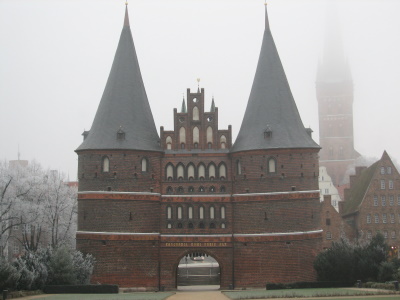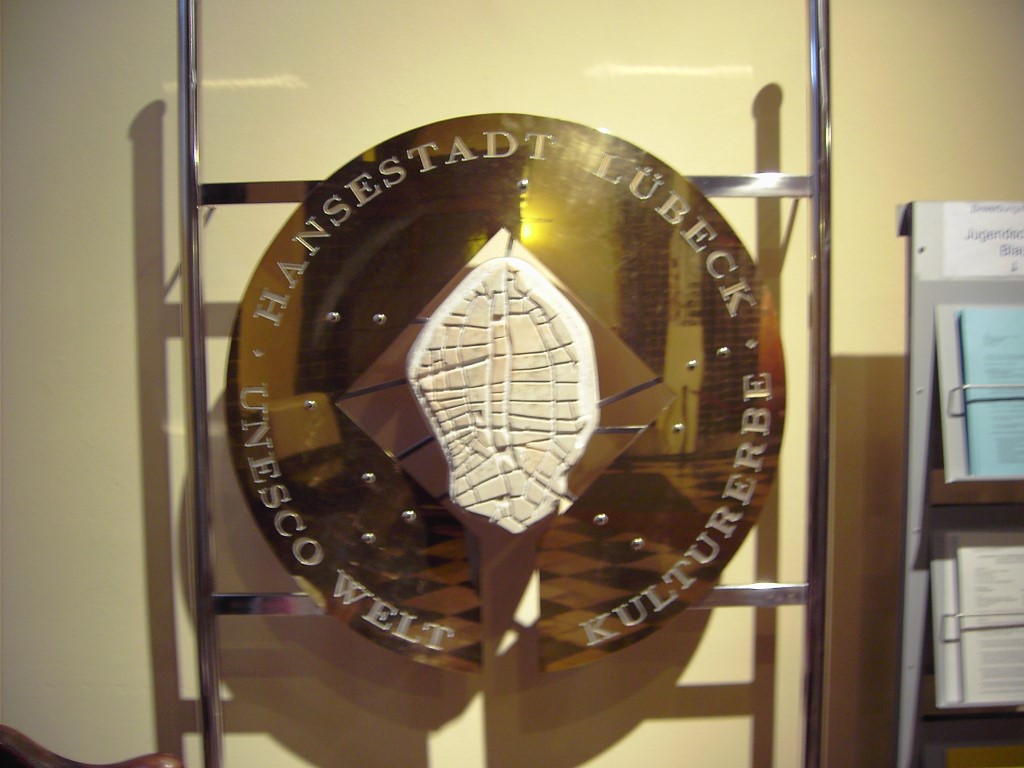Lübeck

The Hanseatic City of Lübeck represents the heritage of a leading player in the medieval Hanseatic League.
This league of merchant cities held a monopoly over the trade of the Baltic Sea and the North Sea. Lübeck’s town plan shows the strict socio-economic organization of that period. Despite serious damage during World War II, a large number of historic monuments remain such as religious buildings, salt storehouses and patrician residences.
Community Perspective: Some find that Old and New live in harmony here, while others lament the “ugly modern constructions, parked cars, cheap shops and eateries”. It’s essentially “a relatively modern city with a few patches of history still within it”. The Holstentor is its most iconic sight.
Map of Lübeck
Community Reviews
GerhardM
We visited Lübeck in September 2024.
Lübeck is an old venerable Hanseatic city. But Lübeck is not just a city with a lot of history, brick art and many impressive churches. Lübeck is also a city with a lot of lively life, streets with beautiful renovated houses and many attractive shops (Marzipan too of course).
The Holster Tor is certainly a highlight and a hike along the harbor is simply lovely.
It´s not a modern city with just a few patches of history.
I have seen also Wismar and Stralsund but Lübeck clearly is the queen of the Hanseatic cities.
Michael Turtle

I was a bit surprised that Lubeck wasn't included as a single site with Wismar and Stralsund - there are a lot of similarities and such a common history. But, regardless, I found it an interesting place to visit.
I note some previous comments about the encroachment of development and reconstruction, however I found the individual buildings to be quite impressive when viewed in isolation. There is a good breadth of architectural styles and periods represented by the main buildings on the island.
It certainly, however, feels like a relatively modern city with a few patches of history still within it - and that gives it a slightly different feel to the aforementioned cities, which I felt still had more of a traditional Hanseatic feel to the old centres.
Incidentally, Lubeck is actually quite a nice place to spend a night or two and relax and I enjoyed wandering around and spending some time by the river.
Read more from Michael Turtle here.
Clyde

I visited this WHS in October 2014. I spent a night here and explored the sights over 2 days. The main landmark is the Holstentor and there is a twin steepled church and a tower nearby. When walking close the Holstentor you'll immediately notice that it is leaning and also somewhat subsiding too. Still it is well kept and the red brick details worth viewing in sunny weather conditions. In the morning the sun shines on the rear facade of the Holstentor and on the nearby historic salt storehouses. The old city centre houses beautiful red brick buildings such as the Rathaus, St Jacob Church, the Burgtor which are worth viewing. It's true that there are quite a lot of urban constructions but I still loved what Lubeck had to offer. The Café Niederegger is worth visiting even if only to see the marzipan heritage sites inside. Behind the Café Niederegger, there was an Oktoberfest celebration with delicious Bratwurst and beers being served so I joined in gladly. I really enjoyed Lubeck and I must say that it is also one of my favourite WHS in Germany.
Karin R Michaud
I was born in Luebeck many years ago. I visit on the internet now and then.Luebeck was bombed during the war and had no choice but to rebuild. A lot of the old building were no longer standing. Of course if one rebuilds it will look new. I find this aspect so wonderful. Old and new live in harmony. After all it is 2013 and time and technology changes. Hope every one has a wonderful time in Luebeck. Appreciate the "old" and marvel at the new. The town should not be in a time-warp. Have a nice day.
Karin
John booth

I visited Lubeck after visiting Wismar and Stralsund, and was disappointed at the rampant disregard for its heritage evidenced by all the modern steel and glass construction. Even the majestic Holstentor was not enough to warrant OUV. The interior of the Petrikirche had been destroyed by being painted white, while that of the Dom had been modernised quite out of character with its red brick exterior.
Els Slots

Lübeck was only reluctantly admitted to the World Heritage List. Its nomination was deferred the first time in 1983 because of the loss of authenticity the city suffered from reconstruction after World War II. The ICOMOS advice at the second attempt (in 1987) also holds more warnings than admiring words. The site is also similar to the nearby Hanseatic cities of Stralsund & Wismar, and a serial nomination was recommended.
I visited Lübeck on a very cold Saturday in December. The picturesque Holstentor is the gate to the city center, with the salt storehouses right next to it. The gate now houses the municipal museum, where one can see what Lübeck looked like before WWII.
Wandering around the city's old quarter I'm afraid I have to agree with the skeptic ICOMOS-people: the fabulous remaining monuments are almost hidden from sight by ugly modern constructions, parked cars, cheap shops and eateries and (at this time of year) Christmas stalls. Lübeck's monuments are heavy on a style called "Brick Gothic", originating in countries in which there was a lack of natural stone.
Ian Cade

I visited Lübeck to celebrate the New Year 2006/7 and had a really lovely time. It was great to see in the New Year on the banks of the river with fireworks going off all around us. I also have a real love for red brick buildings and cobbled streets so I was very much in my element here.
The most famous Building is the Holstentor (picture) and this is a great way to enter the city, it is quite noticeably leaning. It used to be on the 50DM note, and can now be found on a limited run of €2 coins. The Historic Centre of the city is situated on an island behind the gate. There are a fair few large churches in the centre; Marienkirche (twin spires in the left of picture) was the most impressive. It was huge inside, much larger than I thought it would be. We were very lucky to be able to attend a special Sylvester Concert of Handel’s Messiah inside on New Years Eve, which was a real treat.
There are a lot of areas with lovely red brick buildings all through the centre, but it is also quiet spoiled by some very poor town planning in the 1950/60’s especially on the Altermarkt. The once open square has been enclosed by some really unnecessary buildings, which on the south side seem to be offensively bland. However the newer developments can’t hide the undoubted charm of the city.
Not to be missed is Café Niederegger, which is famous for its Marzipan. The shop is like something from a movie. There are also displays of famous people/ buildings made of Marzipan, including a few World Heritage Sites.
Lübeck is situated in Northern Germany about a 45-minute train ride from Hamburg, which is well worth a visit. Also nearby is the WHS of Wismar, for once I didn’t make a short trip to add to my collection, but had I had an extra few hours probably would have done.
Lübeck is a really lovely city, which still has lots of charm despite some misguided development. Well worth a leisurely weekend.
Gatis
As a Hanseatic town Lubeck resembled to me my hometown - Riga. City definitely is attractive, dominated by red brick structures, incredibly high churches.
It seems that World War II and the later prosperity have diminished the charm of this town, but it is worth the visit anyway.
Community Rating
- : Craig Harder George Gdanski Shoaibmnagi Laurey
- : Vlad Lesnikov Tarquinio_Superbo Simonh Yevhen Ivanovych CyBeRr Ligocsicnarf89 Rafał Kałczuga
- : David Berlanda Jon Bauer Khuft Peter Alleblas FK Ralf Regele Jean Lecaillon Can SARICA Christravelblog SirLoydd WalGra NonDuality Christoph KoenigMarke Juropa Ligocsicnarf JR's HERITAGE SITES GerhardM Tquist24 Manuelfunk
- : Frederik Dawson Daniel C-Hazard Philipp Peterer Ivan Rucek Martina Rúčková Jan Zimmermann Cezar Grozavu John Smaranda Daniel Gabi Rodinia Philipp Leu Sebasfhb Bruno_Pires Tingmelvin Caminographer Aslak NoahFranc Federico P. Gautamiyer23
- : Gary Arndt Assif Roman Raab Peter Lööv Caspar Dechmann Wojciech Fedoruk Randi Thomsen Svein Elias Rickard Alfredsson Stanislaw Warwas Shijie ZHU Shandos Cleaver Argo Nafis N Kasper Kevin247 Dorejd Astraftis Preiki Emvcaest
- : Els Slots Solivagant Ian Cade Mikko Hubert Clyde Nan Zoë Sheng Lucio Gorla Purrfect CugelVance Isabellemarais Csaba Nováczky Jon Opol
- : Walter Don Irwin VLabhard Aspasia
- : Mahuhe Adrian Turtschi
- : Claire Bradshaw
Site Info
Site History
1987 Inscribed
1983 Requested by State Party to not be examined
Site Links
Unesco Website
Official Website
Related
In the News
Connections
The site has 41 connections
Art and Architecture
Constructions
Damaged
Geography
History
Human Activity
Religion and Belief
Timeline
Trivia
WHS Hotspots
WHS on Other Lists
World Heritage Process
Visitors
454 Community Members have visited.
The Plaque
 (external source)
(external source)